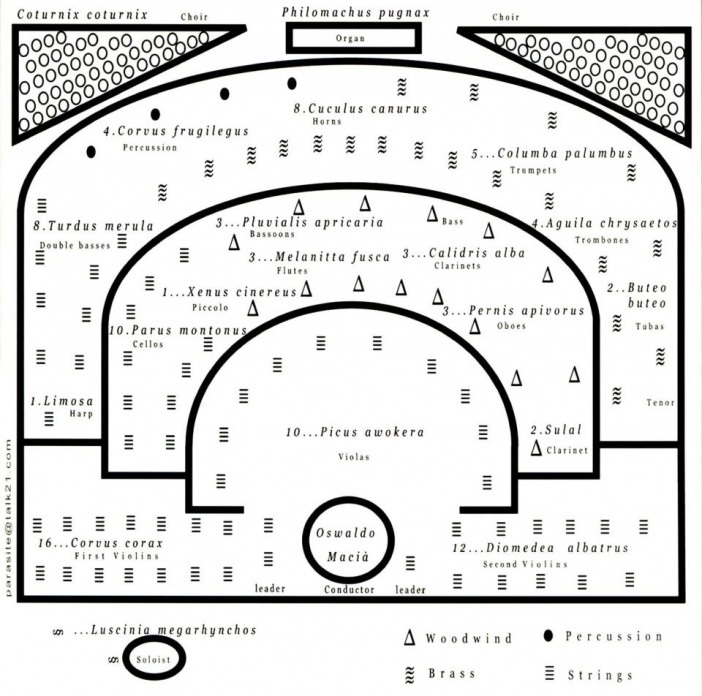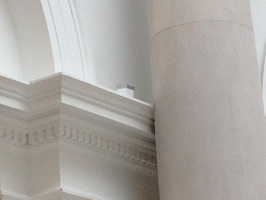Review: bird sound sculpture at Tate Britain

It is an installation that forms part of the Tate’s BP Spotlights, focussing on individual artists or artworks. There are about a dozen running concurrently, and Maciá’s Something Going on Above My Head (1995-9) is one of the few that have no published close date, so I have no idea for how much longer it is available to experience.
It comprises a number of “carefully positioned” speakers that, according to the blurb “fill the space with a mesmerising chorus that the visitor experiences above their head, much in the way that true birdsong is experienced”. The speakers I saw were spaced regularly in one plane, around the circular ledge that circumscribed the space below a cupola, between the ground floor and first floor. A hand-out includes the diagram shown here –in which certain birds occupy positions prescribed in the highly standardised layout of a classical orchestra.
 One of the installation's speakers
One of the installation's speakers With the birds, you co-inhabit the cupola and its immediate surroundings. You can hear the sounds above you when at ground level but move to the level above and the sounds are no longer “above your head”. I could find no information as to how long the piece is before the sequence repeats itself, or indeed whether it comprises a single soundtrack or several overlapping and unequal tracks. The latter approach could create a piece that repeats every few minutes, days, years, or millennia, but that is not clear, and presumably not important.
Unfortunately, nothing about this piece is clear. Unclarity can, of course, be a virtue in art. But the programme note makes claims that are difficult to sustain. The piece is said to illustrate Maciá’s interest in the ambiguity of language. The title of the work both describes the set-up of the installation and alludes to “daily events that go unnoticed by the majority of people.” The inspiration for the work was a newspaper article that referred in passing to Russian submarines dumping nuclear residues in the Baltic Sea.
From there to a carefully orchestrated collage of bird song is quite an abstraction, but fair enough. But it is not mesmerising. You either have to listen too carefully to be mesmerised in order to try (and fail, in my case) to detect any sign of orchestration among the overwhelming hubbub of human activity in an appalling acoustic; or you let the sound wash over you, in which case it is as mesmerising as any other background sound in a noisy environment.
The orchestral diagram and the possibility of realising it sonically is certainly a nice idea. The claimed pitch-based link between the species chosen and the instruments they replace is entirely obscure, and the diagram itself contains some oddities such as spelling errors (including the composer’s name!) and incomplete (and one long-obsolete) scientific bird-names.
Piecing together clues, I think the idea is that an artist has taken considerable care to create and present something that you are not supposed to notice, and cannot fully appreciate. The alternative view is that the Tate bunged some speakers into the least useful of its spaces and Maciá dusted off an old work, neither party caring very much about whether it made any sense.
 RSS Feed
RSS Feed
